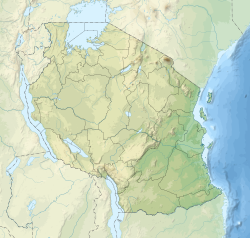| Pangavini Island | |
|---|---|
 Pangavini Island | |
| Location | Dar es Salaam Region, Kinondoni District |
| Nearest city | Dar es Salaam |
| Coordinates | 6°40′29″S39°14′20″E / 6.6747°S 39.239°E |
| Area | 2.13km² |
| Established | 1975 |
| Governing body | Marine Parks & Reserves Authority (Tanzania) |
| Website | DMRS |
Pangavini Island (Kisiwa cha Pangavini, in Swahili) is a protected, uninhabited island under the Dar es Salaam Marine Reserve with the IUCN category II located within Kinondoni District of Dar es Salaam Region in Tanzania. The island reserve measures around 2.13 km2. Pangavini is the smallest island in the group, only about 250 m long; it has a rocky coastline without beaches. To the west of the island is Kunduchi ward and to the north is Mbudya Island. To the south of the island is Bongoyo Island. [1] [2]
